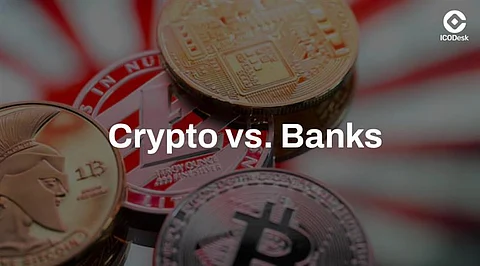

The tension between crypto vs. banks is reaching a critical stage. While both sectors are integral to the movement of money, their underlying principles, operating models, and regulatory needs differ significantly. The next wave of regulatory developments may not simply create compliance frameworks—it could redefine the global financial infrastructure itself.
Banks operate under centralized authority, heavily regulated by governments and central banks. Their systems rely on intermediaries, oversight, and established trust built over centuries. Cryptocurrencies, by contrast, function on decentralized blockchain networks, reducing reliance on intermediaries and placing trust in code and consensus mechanisms rather than central authorities.
This fundamental difference creates friction in areas such as transaction speed, cost, and cross-border efficiency. Banks focus on stability and risk management, while crypto prioritizes innovation, speed, and open access.
Governments worldwide are moving toward more defined regulatory frameworks for digital assets. The U.S. has seen discussions around the classification of cryptocurrencies as securities or commodities, while the European Union’s Markets in Crypto-Assets (MiCA) regulation aims to create uniform standards across member states.
For banks, stricter regulations on crypto could reduce competition from decentralized finance (DeFi) platforms. For the crypto sector, overregulation risks stifling innovation and pushing activity to less-regulated jurisdictions. The upcoming decisions will determine whether regulation fosters integration between the two sectors or deepens the divide.
If regulatory changes favor cryptocurrencies, payment infrastructure could undergo a major transformation. Stablecoins, for example, offer near-instant settlement with minimal fees, challenging the costly and slow cross-border transfer systems used by banks. Central Bank Digital Currencies (CBDCs) further complicate the picture, as they blend elements of both traditional and blockchain-based finance.
A shift toward blockchain-based settlement systems could reduce operational costs, improve transparency, and offer more inclusive financial services, particularly in underbanked regions.
An aggressive regulatory approach could create market uncertainty, leading to capital flight from crypto markets and potential instability in investor sentiment. On the other hand, failure to regulate effectively could open the door to money laundering, fraud, and systemic risks.
Banks are concerned about the volatility of cryptocurrencies and their potential use in illicit activities. Crypto advocates point to banks’ history of financial crises and argue that blockchain offers greater transparency and security if implemented correctly.
The next phase of financial regulation will likely determine whether banks and crypto entities become collaborative partners or entrenched rivals. Several possibilities exist:
Integration Model: Banks adopt blockchain technology, offer crypto custody, and integrate stablecoin payments.
Dual System Model: Crypto and banks operate in parallel but with limited interaction.
Dominance Model: One sector gains regulatory advantages, potentially sidelining the other.
The stakes extend beyond market share. The outcome will influence how money is moved, stored, and trusted globally for decades to come.
The battle between crypto and banks is not merely about competing business models—it is about the architecture of the global financial system. As regulatory frameworks solidify, the balance between innovation and stability will determine whether the financial infrastructure of the future is centralized, decentralized, or a hybrid of both. The coming years may bring one of the most significant shifts in the history of money.